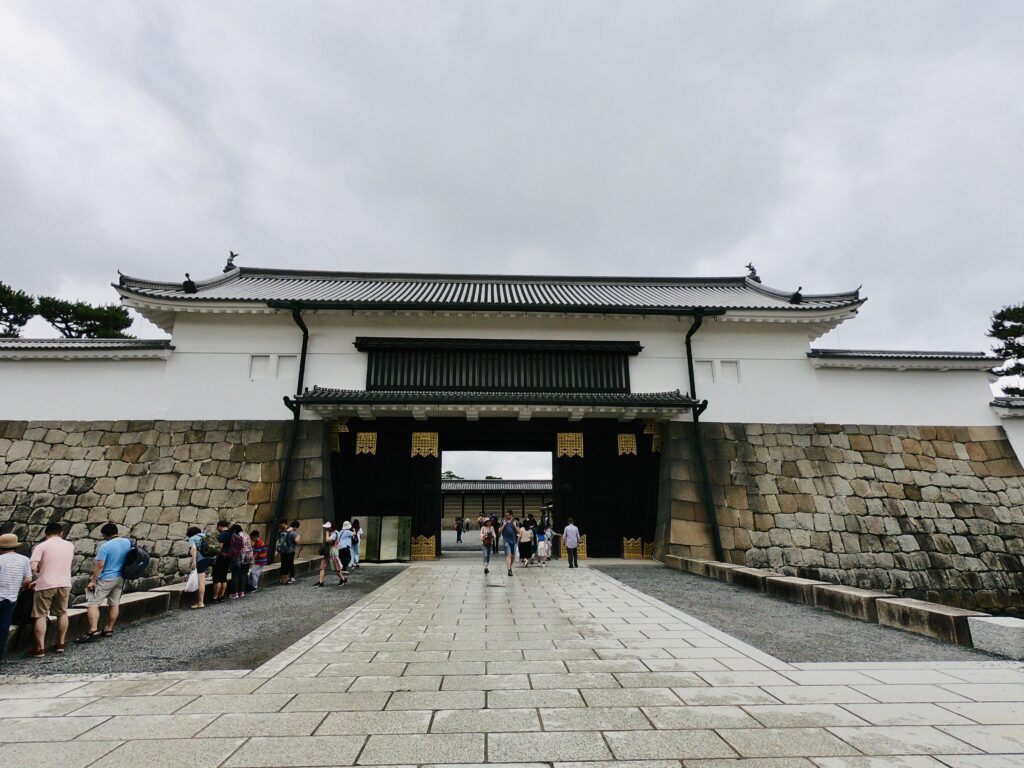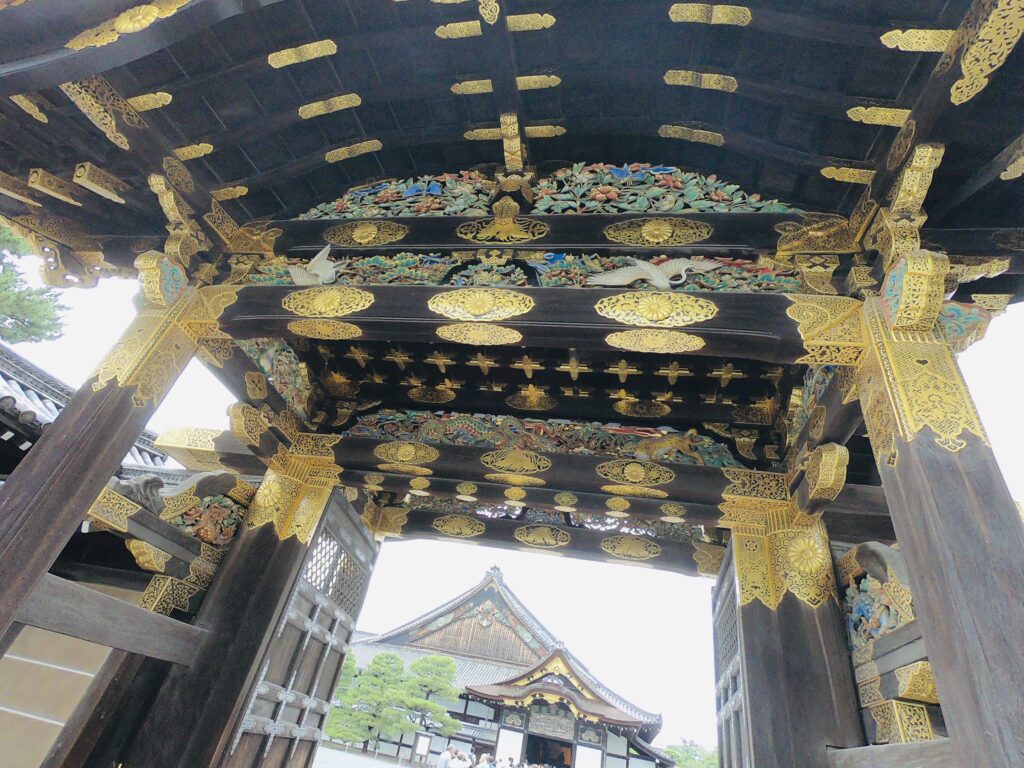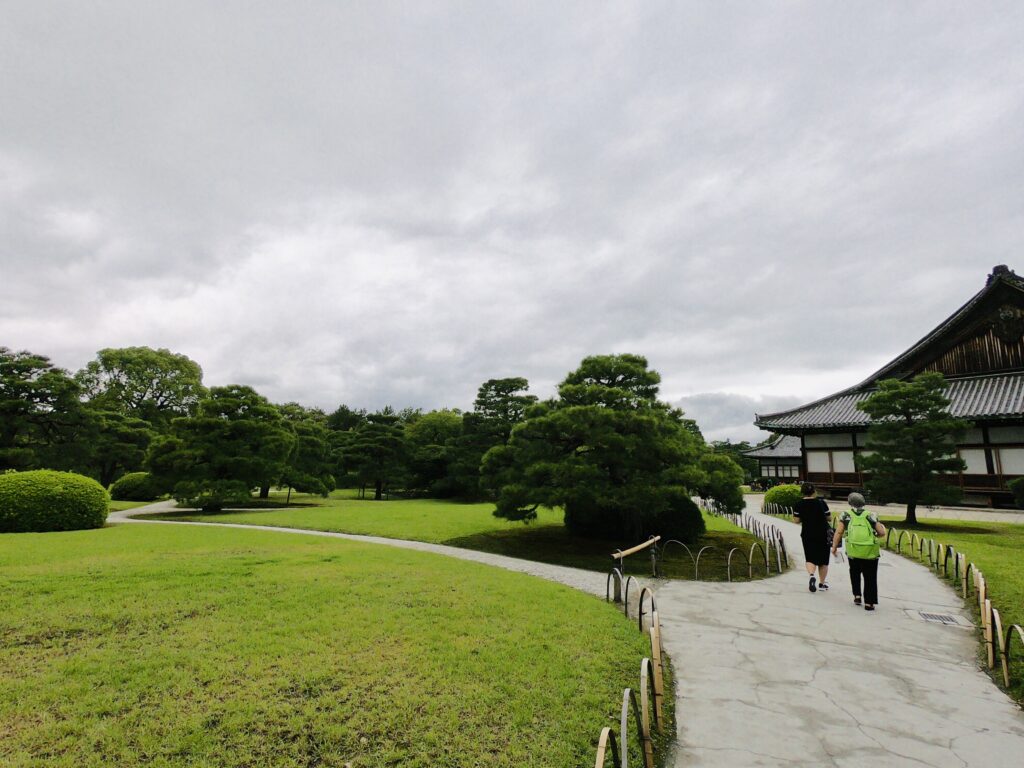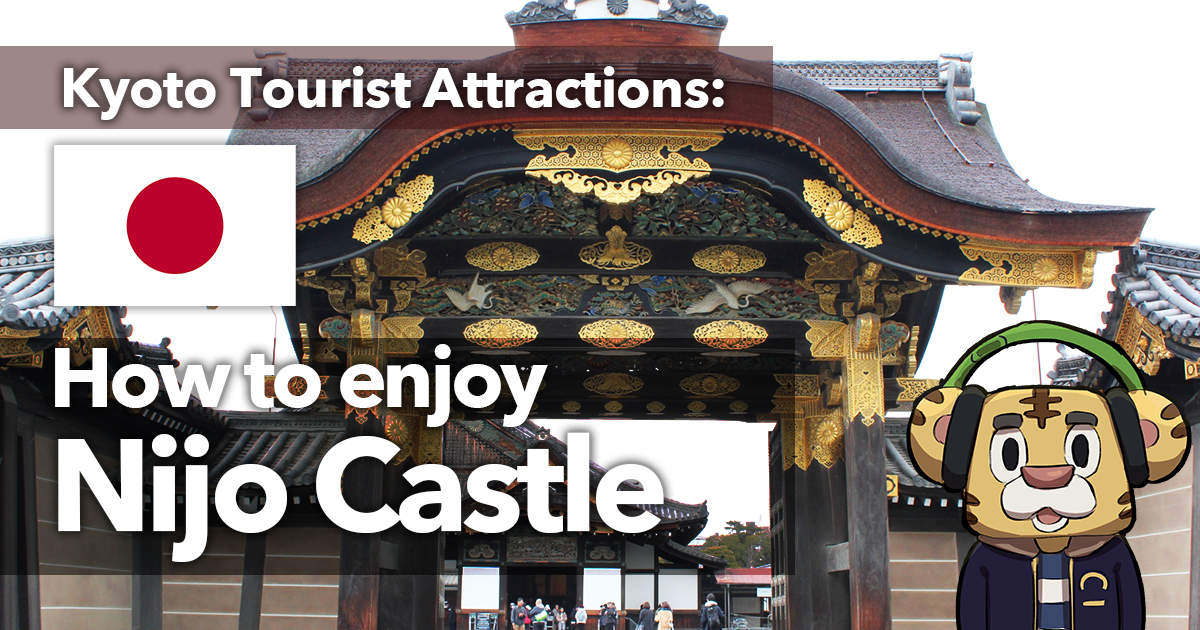INTRODUCTION

Nijo Castle is one of the most popular tourist attractions in Kyoto, where visitors can experience the rich history and culture of the city. Nijo Castle was built in 1603 by Tokugawa Ieyasu to protect the imperial palace in Kyoto, and is a symbol of the power of the Edo shogunate. 1994 it was registered as a UNESCO World Heritage Site, and is highly regarded for its historical value and beautiful architecture.
The main attraction of Nijo Castle is its magnificent architecture and beautiful gardens. Within the castle is the Ninomaru Goten, whose sumptuous interior overwhelms visitors. The Ninomaru Palace is designated as a Japanese National Treasure, and visitors can see magnificent paintings created by painters of the Kano school. Visitors can also imagine historical scenes in the tatami-matted hall and the grand hall where the shogun had an audience.
In addition, the gardens of Nijo Castle are beautiful in every season. In spring, the cherry blossoms are in full bloom, and the entire castle turns pink, a spectacular sight. In the fall, the beautifully colored autumn leaves adorn the garden. Visitors can enjoy different scenery in each season, so there is always something new to discover no matter how many times they visit.
In addition, Nijo Castle regularly holds special exhibitions and light-up events, allowing visitors to enjoy the castle in a fantastic atmosphere at night. These events are a special experience for tourists and will give them a new appreciation of Nijo Castle.
Nijo Castle is the perfect place to gain a deeper understanding of Kyoto’s history and culture. While enjoying the beautiful architecture and gardens, visitors will be able to fully appreciate the charms of Kyoto by visiting the center of Japanese power and culture during the Edo period. When visiting Kyoto, be sure to visit Nijo Castle and experience its magnificent charm.
History and culture of the tourist attraction
Nijo Castle, built in 1603 by Tokugawa Ieyasu, is a historical castle and an important symbol of the power of the shogunate during the Edo period. Tokugawa Ieyasu built this castle to protect the imperial palace in Kyoto, and thereafter Nijo Castle was used as a place for the Tokugawa shoguns to stay during their stay in Kyoto; it is also known as the site where Tokugawa Yoshinobu made the Great Restoration of Japan in 1867, marking a historical turning point at the end of the Edo period.
At the center of Nijo Castle is the Ninomaru Palace, whose architecture and decorations are sumptuous. Inside the palace, there are many paintings on the walls, which were painted by painters of the Kano school. The paintings depict traditional Japanese motifs such as tigers, pine trees, and cherry blossoms, and are overwhelming in their beauty and skill. The Ninomaru Palace was also the site of important historical scenes, including the Great Hall where the shogun had an audience and rooms where political meetings were held.
The garden of Nijo Castle is a place where visitors can experience the beauty of Japanese gardens. The garden is designed as a pond garden, and visitors can enjoy the changing scenery of the four seasons as they walk through it. The cherry blossoms bloom in the spring and the leaves turn beautiful colors in the fall, allowing visitors to enjoy a different beauty each time they visit. In the garden, stone bridges, waterfalls, and ponds are cleverly placed to allow visitors to experience the harmony between the beauty of nature and human hands.
In addition, Nijo Castle regularly hosts special exhibitions and cultural events. This gives visitors the opportunity to experience traditional Japanese culture and history. Nighttime illumination events are particularly popular, allowing visitors to enjoy Nijo Castle in a fantastic atmosphere.
Nijo Castle is a place where visitors can experience its rich history and culture. By learning about the history of the Tokugawa Shogunate and traditional Japanese culture, and enjoying the beautiful architecture and gardens, visitors will experience the deep fascination of Kyoto.
Places to visit
Nijo Castle is a sightseeing spot worth visiting throughout the year, but there are certain times of the year that are especially recommended. Spring and autumn are especially beautiful. In spring, the cherry blossoms are in full bloom and the entire castle is tinted pink. In autumn, the leaves turn beautiful colors and the garden is decorated with vivid reds and yellows.

Major tourist attractions and popular places to visit
Ninomaru Goten
Ninomaru Goten is the central building of Nijo Castle, and is characterized by its gorgeous and gorgeous wall paintings. Inside, there is a large hall where the shogun had an audience and rooms where political meetings were held. These rooms are decorated with beautiful paintings by painters of the Kano school and are designated as Japanese National Treasures.
Ninomaru Garden
The Ninomaru Garden is designed as a pond garden with a circular path around it, allowing visitors to enjoy the scenery of the four seasons. In particular, the cherry blossoms in spring and the autumn leaves in fall are not to be missed. The stone bridges, waterfalls, and ponds are cleverly arranged to allow visitors to experience the harmony between the beauty of nature and the handiwork of man.

Honmaru Goten
The Honmaru Goten is an important building, along with the Ninomaru Goten, where many historical events took place at the end of the Edo period. The Honmaru Goten is also known as the place where the “Daijohokan” (the Great Restoration of Japan) took place, and visitors can feel the historical significance of the event.
Nighttime Lights
Nijo Castle is regularly illuminated at night. Visitors can enjoy the fantastic atmosphere of Nijo Castle when it is lit up, which is different from the daytime. Light-up events in spring and fall are especially popular and worth visiting.
Points to note at sightseeing spots
- Avoid crowds: Nijo Castle is a popular tourist destination and can be very crowded, especially during the cherry blossom season in spring and the fall foliage season in fall. We recommend visiting early in the morning or on a weekday.
- Wear comfortable walking shoes: Nijo Castle is a large castle, so it is recommended to wear comfortable walking shoes.
- Photography: Photography is prohibited in some areas of the Ninomaru Palace, so please follow local instructions.
- Protection of the natural environment: Because the natural environment in the garden is carefully preserved, please be sure to take your trash with you and avoid entering areas other than those designated for this purpose.
Nijo Castle is a place where visitors can enjoy its rich history and beautiful scenery. Please visit and enjoy the charm of Nijo Castle to the fullest.
Access
Access to Nijo Castle is very convenient and can be easily reached from Kyoto Station. Below are the directions from Kyoto Station to Nijo Castle.
Access from Kyoto Station
Nijo Castle is conveniently accessible by train and bus. You can get there by the following ways
By train
- JR Sagano Line (Sanin Honsen Line): Take the JR Sagano Line from Kyoto Station and get off at Nijo Station. The trip takes about 10 minutes. From Nijo Station to Nijo Castle is about a 15-minute walk.
- Subway Karasuma Line: From Kyoto Station, take the Subway Karasuma Line and transfer to the Tozai Line at Karasuma-Oike Station. Get off at “Nijojo-mae” station. The trip takes about 15 minutes. From Nijojo-mae Station to Nijo Castle is about a 5-minute walk.
By bus
- City Bus No. 9: Take City Bus No. 9 from Kyoto Station bus stop and get off at Nijojo-mae bus stop. The trip takes about 20 minutes. From the bus stop to Nijo Castle is about a 2-minute walk.
- City Bus No. 50: Take City Bus No. 50 from Kyoto Ekimae bus stop and get off at Nijojo-mae bus stop. The trip takes about 20 minutes. From the bus stop to Nijo Castle is about a 2-minute walk.
By Taxi
It takes about 15 minutes from Kyoto Station to Nijo Castle by cab. Cabs are also convenient if you have a lot of luggage or if public transportation is congested.
Bicycle rental
Bicycle rental is also widely used in Kyoto City. One option is to rent a bicycle near Kyoto Station and ride it to Nijo Castle. The trip takes about 20 minutes. Bicycle transportation is recommended as it allows you to enjoy the scenery of Kyoto while sightseeing.
Either way, access to Nijo Castle is easy and comfortable. Use public transportation, cab, or bicycle to visit Nijo Castle while enjoying the beautiful scenery of Kyoto.
Hours of Operation, Admission Fees
When visiting Nijo Castle, it is advisable to check information about opening hours and admission fees in advance to ensure a smooth visit. Below are details about Nijo Castle’s business hours and admission fees.
Business Hours
Nijo Castle’s regular hours of operation are as follows
- 8:45 AM to 5:00 PM (last admission at 4:00 PM)
- Open all year round (except December 29 through 31, when the castle is closed).
Opening hours are subject to change during seasons and special events. It is recommended to check the official website for the latest information before visiting.
Admission Fees
Admission fees for Nijo Castle are as follows
- General (adult): 1,300 yen
- Junior high and high school students: 400 yen
- Elementary school students: 300 yen
Additional fees may apply when special exhibitions or events are being held.
Special Exhibitions and Events
Special exhibitions and light-up events are held periodically at Nijo Castle. These events often take place outside of regular business hours and offer a special experience. In particular, the nighttime light-up events allow visitors to enjoy Nijo Castle in a fantastic atmosphere. Check the official website for event details and dates and times.
Thus, Nijo Castle can be visited throughout the year to enjoy its beautiful architecture and gardens. Please check the opening hours and admission fees in advance to enjoy a pleasant sightseeing tour.
Summary
Nijo Castle is a historical castle built by Tokugawa Ieyasu in 1603 to protect the imperial palace in Kyoto. It symbolized the power of the shogunate during the Edo period and was registered as a UNESCO World Heritage Site in 1994. The castle is especially attractive for its gorgeous barrier paintings in the Ninomaru Palace and its beautiful gardens that change with the seasons. Spring, when the cherry blossoms are in full bloom, and autumn, when the leaves turn brilliant colors, are particularly recommended times to visit.
Nijo Castle is easily accessible from Kyoto Station via the JR Sagano Line, the Karasuma Subway Line, and city buses. Cabs and rental bicycles are also convenient modes of transportation. Nijo Castle is open from 8:45 am to 5:00 pm, with last entry at 4:00 pm.
Nijo Castle is a place of magnificent architecture, beautiful gardens, and deep history. By learning about the history of the Tokugawa Shogunate and traditional Japanese culture, and enjoying the beautiful scenery, visitors will be able to fully appreciate the charm of Kyoto. When visiting Kyoto, be sure to visit Nijo Castle and experience its charms.



